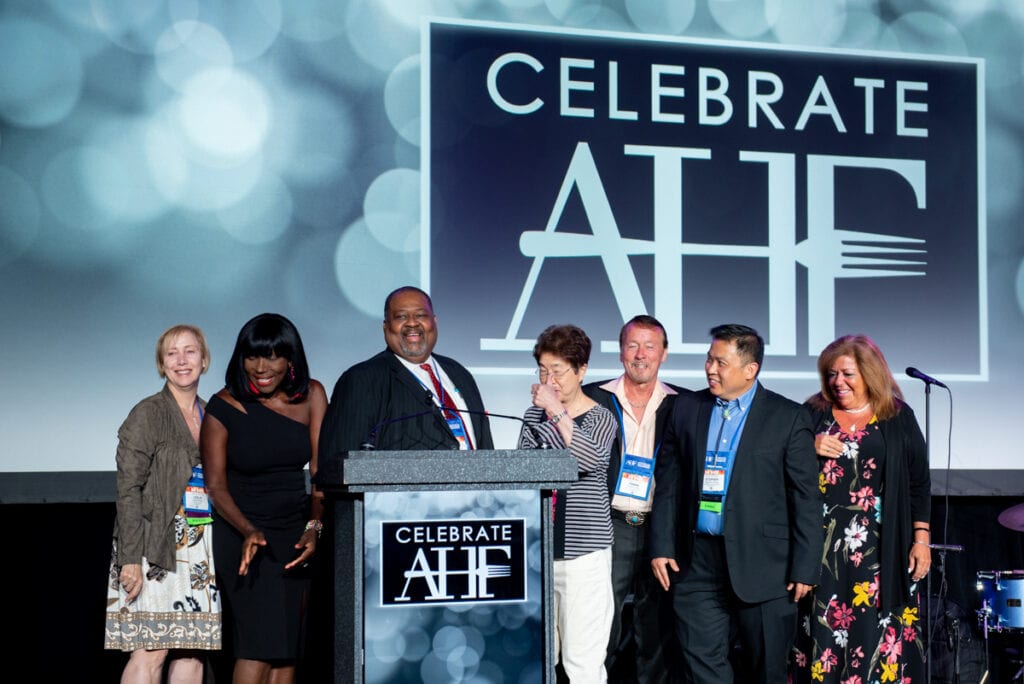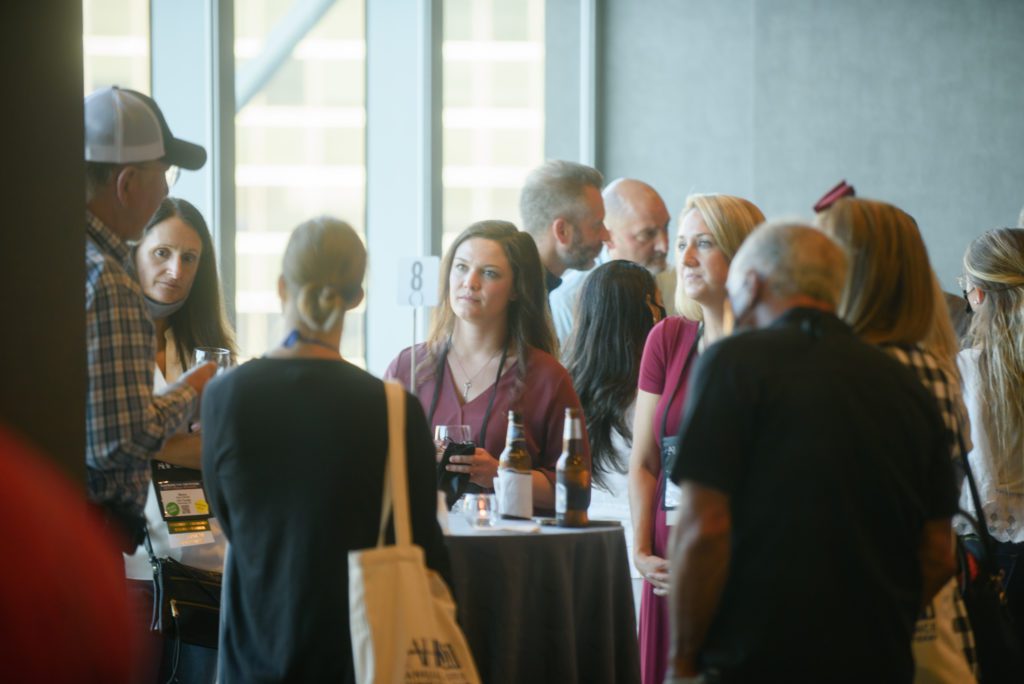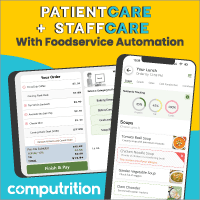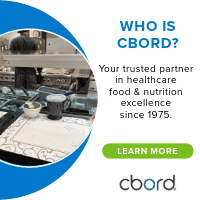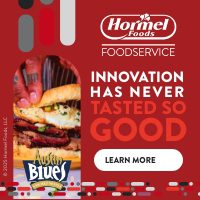AHF Regulatory Readiness Center
AHF Regulatory Resource Center
Regulatory readiness is a hot topic within healthcare, with an increased emphasis and focus on the overall food service component through infection control, environment of care, patient safety, human resources, emergency management, leadership, and patient care chapters of the survey. Foodservice is becoming an ever more increasing focus on these inspections and operators need to be prepared and armed with the tools for success. In many cases, contractors anticipate surveys and have a “strike team” ready to deploy when a survey starts or when it is expected to take place. Self-Operated foodservice teams need to come together and share resources/support each other through these various inspections.
Within AHF’s Regulatory Readiness Center below you will find written narratives, documents, links, and more to help ensure you and your team are prepared for your next regulatory need. Use the drop down boxes below to open and access each section.
Regulatory Information
Healthcare organizations participate in several aspects of credentialing and certification and are under the direction of CMS when participating in the Medicare/Medicaid programs. By law, all healthcare organizations are required to meet specific CMS standards and are inspected at regular intervals. Depending on the type of facility, inspections can range from quarterly to tri-annually. Regardless of who is certifying the organization, CMS has direct oversight of all programs, including those in long-term care. Healthcare funding can often be based on survey outcomes, and results are made public. Most facilities (and this varies by state) are inspected at least once a year by the local department of health. These inspections are often available to the public and posted on websites. Some states grade the foodservice operation based on an A-F scale and require this be posted on the entrance door near the operating license. Regardless of the type of inspection and the frequency of those inspections, Operators must be prepared at all times. Regular self-inspections are important to ensure that all standards are being met and that your teams can understand what surveyors are looking for. Frequent self-inspections also give you time to review any discrepancies you may have, and give you time to ensure all of your documentation is up to date, in one place, and accurate. As survey focus continues to gain traction, the focus on the overall care team, which includes nutrition services and their role in patient care, becomes part of the survey focus.
Regulatory readiness is a hot topic within healthcare, with an increased emphasis and focus on the overall foodservice component through infection control, the environment of care, patient safety, human resources, emergency management, leadership, and patient care chapters of the survey. Foodservice is becoming an ever more increasing focus on these inspections and operators need to be prepared and armed with the tools for success. In many cases, contractors anticipate surveys and have a “strike team” ready to deploy when a survey starts or when it is expected to take place. Self-Operated foodservice teams need to come together and share resources/support each other through these various inspections.
Regulatory inspections, even though they vary in nature of size and scope, generally include a comprehensive review of the CMS standards, and interpret the facility’s policies and procedures, ensuring that they are being followed. This is done through a review of documentation, observations & inspections of standards, and through process reviews which include interviews. CMS uses a “See it, Write it, Cite it” approach when it comes to addressing deficiencies. When a practice does not meet standards or the defined policy, it is cited on the spot. It is important that within our foodservice departments, standards are being followed according to established policies, and, all records, including training records, are available. Preparation is key for any survey that you may encounter. Both from a facility standpoint (HACCP, Sanitation) and a frontline staff standpoint (training, documentation, behaviors).
What can you expect during a regulatory survey? Most surveys, regardless of who is conducting, start out with an opening session. CMS Long Term Care inspections, which are usually conducted by the State Agency (Virginia Dept. of Health, AHCA in Florida, North Carolina Dept. of Health, as examples) are usually every year, and, survey teams arrive on-site and go right into inspection mode. There is no preparation or warning. The survey beings when the team walks in the door and one surveyor is usually assigned to Nutrition and will begin with the tour of the area and then start to review pathways.
These inspections can last two to five days, or longer, depending on the size of the facility. Surveyors will look at your storage areas, coolers/freezers, serving lines, dish room areas, café’s, vending areas, delivery vehicles, looking for correct holding/serving temperatures, ensuring food is labeled and dated, checking the consistency of foods, looking for a variety of food in your facility (to ensure you offer variety to your residents), checking HACCP logs, including dish machine temperatures, surveyors often will request a test tray and hold it for a specific amount of time, and take temperatures of the food to ensure a proper serving temp.
First impressions are a must, surveyors will often make a judgment call on how much time they spend in the kitchen based on the overall cleanliness and organization of the area. Pathways will be followed if deficiencies are observed. For example, if trayline temperatures are not meeting standards (HACCP or defined policies), a tracer may be initiated in following the flow of food from ordering & receiving, to serving the food to the resident. Inspections also will include interviews with residents, facility staff, and you may be asked to provide vendor invoices, kitchen repair logs, sanitation logs, fire safety documentation, and health department inspections.
There may be times where the leader will be asked to attend interdisciplinary meetings when the survey team is on-site, so you will want to be sure you understand the various expectations of your role in these meetings, and how your department contributes to the safety and well being of the resident. Usually, the survey team will review findings with the group at the end of the survey, or, will share them with senior leadership. Action plans are required for any deficiency, and, if severe enough, can result in a re-survey in 30-60-90 days.
Regulatory surveys in hospitals follow the same suit, normally, you can expect the survey team to arrive on-site for a three or five-day survey. Some surveys last longer, and, depending on the agency, can vary in size and scope of the number of surveyors and days on-site. Based on accreditation status, survey days are calculated by adding up the number of surveyors and days that they are on site. For example, fifteen survey days may translate to three surveyors on site for five days, or five surveyors on site for three days.
Accreditation is valid for the specified time frame of the agency performing the accreditation, and a survey window is opened for a specific period of time and remains open until the last day of the surveyor’s exit from the prior survey. You can expect the survey team to arrive on-site and prepare for an opening conference. During the conference, the schedule is set and the survey process begins. You can expect a tour of the kitchen, reviewing your life safety equipment, such as fire extinguishers, sprinklers, fire doors, fire exits, hood systems, ansul systems, review of kitchen equipment maintenance records, and a review of the sanitation process, through observation and documentation review of the dish machine logs and areas. This is usually performed by the life safety surveyor, earlier in the survey.
Many times, the lead surveyor will designate the life safety surveyor to review all of the kitchen processes, including sanitation, time and temperature/HACCP review, training, and observation of practices. Other times, usually the nurse surveyor is tasked with reviewing the kitchen processes and will tour the kitchen, following the flow of food, observing trayline, following cart & tray delivery to the units, reviewing diet office procedures, and looking into policies and procedures. These inspections can last anywhere from 10-15 minutes to two or three days. Pathways can be followed if any deficiencies are found.
A separate surveyor will review employee records, so you may be asked to present your files to the HR/Competency review session. You should work closely with your HR department to ensure that you have competencies, education, training, and any other documentation that the regulatory agencies require in those files (or within the HR files). As part of any regulatory survey, you may be asked to attend interdisciplinary meetings such as Environment of Care, Emergency Operations/Preparedness, and Facility Leadership. Surveyors will request documentation such as dish machine logs, hood inspections, kitchen equipment logs, and if deficiencies are found in processes, they may ask for competencies or training.
During patient tracers, dietitian notes may be reviewed and further information from surveyors may be requested. Each day, surveyors will start with a review of their previous day’s activities and findings, and when the survey is over, an exit survey will be conducted. Leaders should stay connected during the survey process to know what is going on and respond accordingly. Again, readiness is key, first impressions are important, and staff should know what to expect at all times.
Leading practice for both inspection and survey preparation is having a plan that you can execute when a surveyor arrives. Regular self-inspections can be used to help facilitate survey preparedness and used as a training tool. Most facilities have a regulatory response team, and foodservice leaders should be part of these teams to stay on top of changes, expectations, and know what to expect. This guide provides documents that can help you prepare for your survey and are specific to the agencies who perform the surveys. These include CMS, Joint Commission, HFAP, DNV GL, Department of Health, USDA, FDA, NCQA, ACHC, and HQAA. CMS acts as the oversight or owning agency for writing the standards that the accreditation agencies survey. Joint Commission, HFAP, and DNV are the most prevalent within healthcare organizations and are approved to conduct surveys on behalf of CMS.
The Joint Commission, known to most at TJC or JCAHO, is the largest accreditation agency in terms of members. There are over 5,000 hospitals that are TJC accredited. The goal of TJC is to help healthcare organizations become highly reliable, focusing on patient safety and quality healthcare. Organizations are certified every three years using elements of performance that are based on CMS standards (Crosswalk elements of performance are: Environment of Care, Emergency Management, Leadership, Provision of Care, Infection Control, Life Safety, Human Resources). During the survey process surveyors determine satisfactory, partial, or insufficient compliance based on the elements of performance through visual inspection, document review, and tracer activity. A Safer Matrix is used to determine the overall reliability of an organization determining the likelihood to harm a patient, visitor or staff member. The Y axis is scored as high, moderate, or low, based the size and scope of the deficiency, with the X axis scored as widespread, pattern, or limited. Each deficiency can be counted as one item, so if you are missing multiple days of refrigerator temperatures, each missing data point could be counted individually, with a potential for a widespread, high likelihood to harm someone. Once the survey is completed, facility results are tallied and reviewed by committee, and the facility is deemed accredited, provisional, conditional, preliminary denial, or is denied accreditation completely.
HFAP is a CMS authorized accreditation organization with a growing membership. HFAP surveys facilities using comprehensive review of patient centered processes without disrupting overall flow of patient care. Recommendations are made based on leading practice and standards are measured based on realistic, understandable, measurable, beneficial, and achievable practices. Standards exceed CMS conditions of participations. The main focus of HFAP surveyors is to provide an educational experience that focus on providing a high quality of care provided to the patient. Survey’s take place every three years. There are three categories of accreditation, full accreditation, interim accreditation, and denial. During a survey, everyone who takes care of a patient is encouraged to participate in the process and provide input.
DNV focuses on safeguarding life, property, and the environment. DNV started accrediting healthcare organizations in 2008 and has steadily grown over the years. DNV has a worldwide reputation for quality and integrity in certification, standards development, and risk management, in many manufacturing companies and industries worldwide. Surveys are valid for one year, and follow the tracer methodology, surveying both clinical and non-clinical areas. Any nonconformities are the responsibility of the facility to correct and are facilitated through a corrective action plan that is reviewed. DNV uses three categories of accreditation that include Accredited, Jeopardy Status, and Not Accredited.
Regardless of the accrediting organization, all of the ‘big three’ agencies are related to the CMS conditions of participation. The key to a successful regulatory survey is putting together a survey response plan, educating your teams on what to do during a survey, and ensuring quality operations 100% of the time. In this guide, there are links to documents from the accreditation agencies, self-inspection guides, and tools to help you prepare for a survey. We also ask that if you experience a survey, you document your experience and share it with the AHF membership. Keep these leading practices in mind:
- Be prepared, all of the time- every day is survey day
- Have your paperwork and documentation in order for all areas both clinical and non-clinical
- Know your role in a survey, even if that means providing food and snacks to surveyors
- Assess and Verify all of your processes, review policies and procedures to ensure they are followed
- Work with your other Support Services departments to keep documentation/work order/kitchen maintenance histories up to date
- Conduct your self-audits/surveys monthly
- Train your managers, supervisors, leads, and frontline staff, to know how to respond to a surveyor and what to look out for
- Hold mock audits/surveys to prepare you for the real survey
- Ask for help if you are unsure about something, do not assume surveys and standards are the same across the board, remember, healthcare organizations have different policies that are followed, and surveyors are verifying that you are following YOUR policy
- Surveyors are looking at overall patient safety, and your department’s role in keeping them safe
Foodservice Regulatory Agency Links
FDA Food Code
- This is what local health departments inspect for, and what CMS uses for interpretive guidelines for their annual inspections.
- https://www.fda.gov/food/fda-food-code/state-retail-and-food-service-codes-and-regulations-state
767-Page Food Code, Provided by the FDA
Joint Commission Website
Restaurant Inspection Checklist (leading practice)
HFAP Websites
- https://www.hfap.org/wp-content/uploads/2020/08/HFAP_QR20_digital.pdf
- https://hfap.org/pdf/2018v2/Acute_Care_Manual_2018_v2_Prepublication.pdf
HFAP CMS Crosswalk
DNV Website
CMS Standards
Regulatory Documents (Templates, Training, Tips, Checklists, and More)
CMS, TJC, HFAP, DVN Documents directly related to inspections, surveys, and requirements:
- CMS Nutrition
- CMS Pressure Ulcer
- CMS Kitchen Observation
- CMS Nutrition Pathway
- LTCSP Procedure Guide
- Revised F Tags
- CMS TJC Crosswalk
- CMS Checklist
- CMS Dining Observations
- 2020 Accreditation Requirements
- Acute Care Manual 2018
- HFAP QR 20
- Kitchen Rounding Tool
- Tube Feeding
- Hydration
Customizable Checklists/Training/Audits
- Food Safety Audit 2021 Update
- Inspector Checklist
- Daily Food Service Walkthrough
- Food Safety Checklist
- General Process Audit
- NS Annual Training Documents
- HR Competency Document
- Risk Assessment
- Hazard Vulnerability Analysis
External References/support



